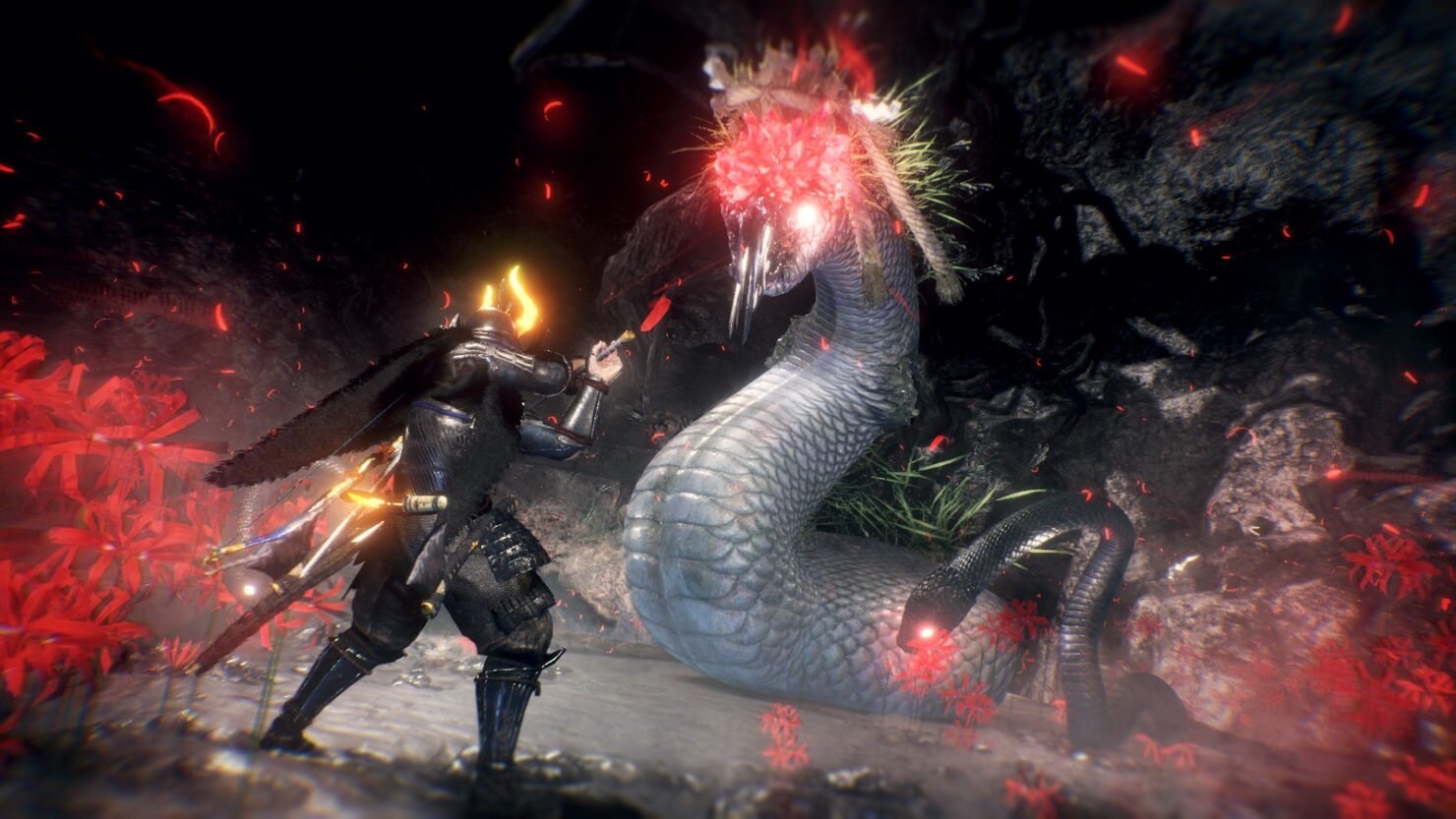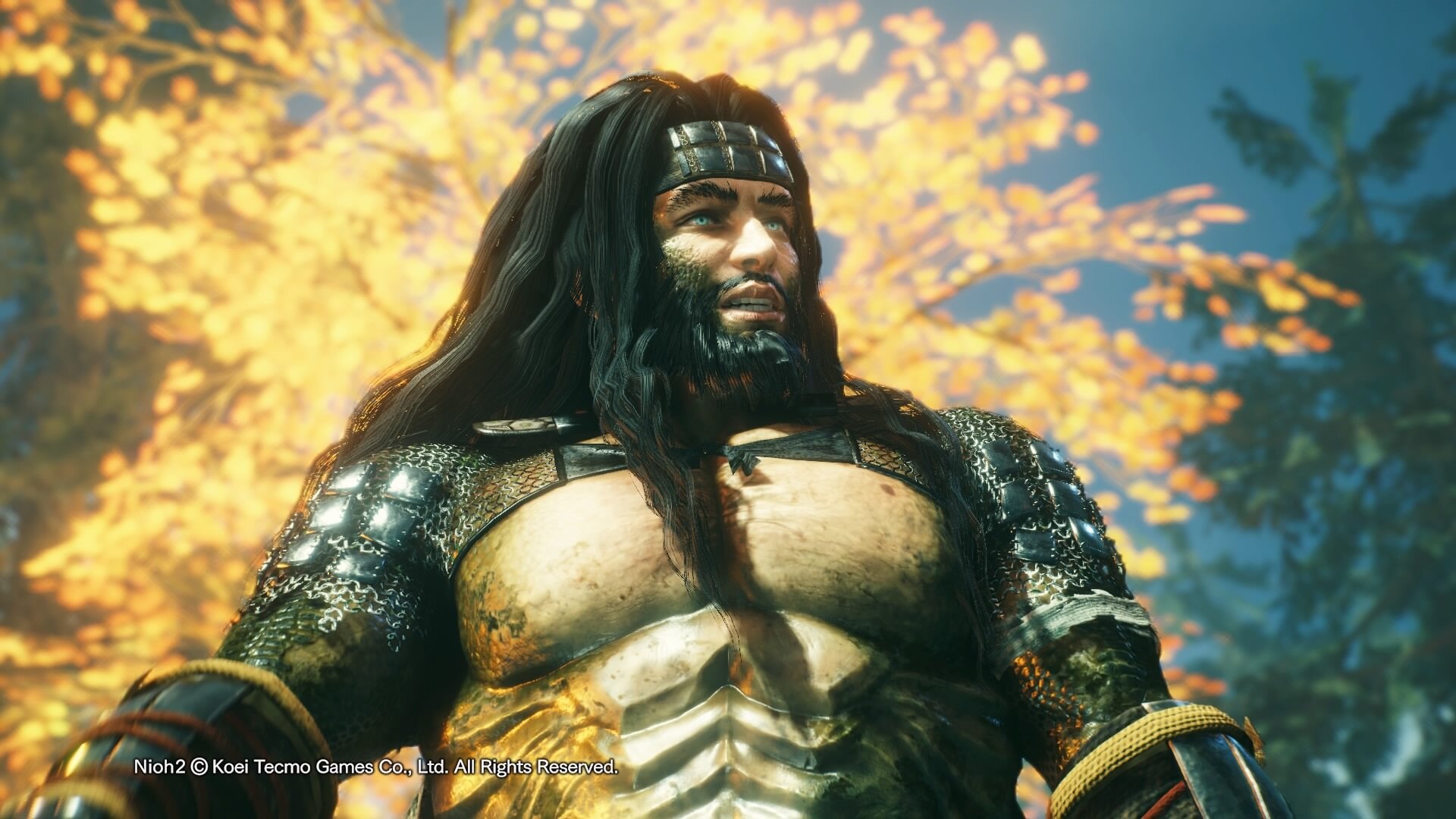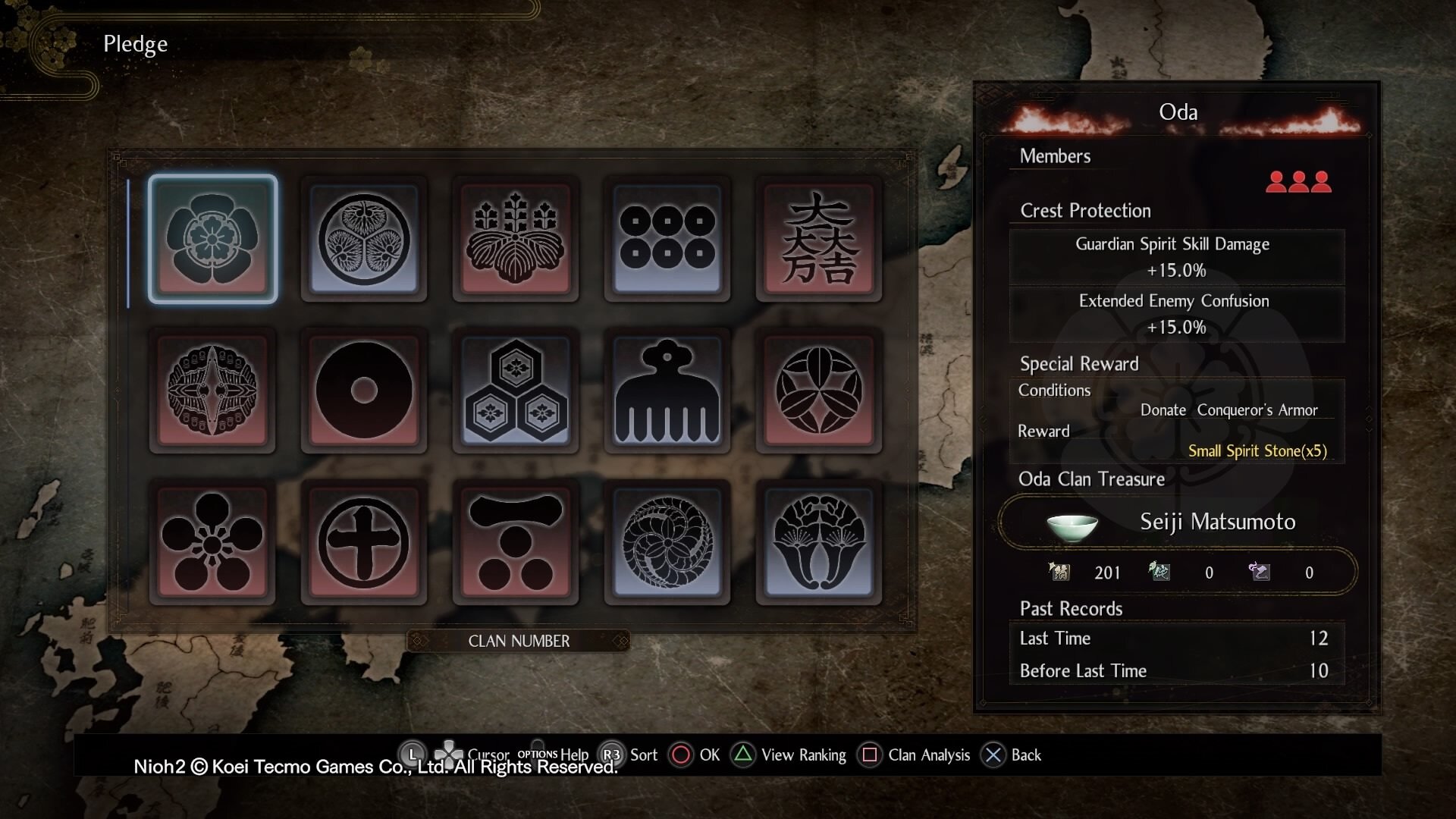Nioh 2 Review - There Will Be Blood
/Nioh 2 hates me. It hates how I try to deal with its steep difficulty curve and complex combat mechanics. It hates me enough that during one point in the game, it gave me a boss that consistently one-shotted me until I found a way to cheese and beat it flawlessly. But more importantly, Nioh 2 hates anyone who underestimates what kind of game they’re getting into; out of the myriad games that fall into the difficult 3D action-RPG subgenre, the Nioh series is the most brutal. It wants you to respect its combat system and mechanics. It wants you to learn how to play properly and flawlessly. And if you do manage to acknowledge Nioh 2 for what it is, I promise you that it is one of the most satisfying games you could play this generation.
Player Character “Hide” and his first encounter with a young lord Nobunaga.
Where Warring States meet the Supernatural
Set 100 years before the first Nioh game, Nioh 2 follows a player-created character nicknamed Hide who is half-Yokai (the game's class of supernatural demons and spirits based upon Japanese folklore). Hide (or Hiddy to his close friends) befriends a travelling merchant named Tokichiro, and together they cement their names in a fictionalized version of the Sengoku Period. In the historical fantasy world of Nioh, wars between clans were waged for control of territory while all of Japan was dealing with the emergence of spirit stones and actual yokai.
During the game’s campaign, you get to meet all sorts of historical figures from the Sengoku Period such as a young Nobunaga Oda, Saika Magoichi, Hattori Hanzo, and Akechi Mitsuhide, just to name a few. Given that this is Nioh’s version of the Sengoku period, the game reimagines these prominent figures with gusto, endowing them with glorious character designs, and giving them their own yokai spirit companions.
An Oceanmaster makes an appearance
Story-wise, Nioh 2’s campaign is a bit of a slow burn during the first half of the game. What contributes to this slow crawl is how the narrative was presented. You go through a series of chapters scattered across a map treated as the game’s hub world, and progress is tied to the completion of main missions. This can be sort of a downside when it comes to telling the game’s plot, as some story bits are tucked away in each mission’s briefing or description. There were times where cutscenes suddenly didn't make sense if you somehow forgot to read everything before starting out a main mission. The game does eventually pick up thanks to a few plot twists, and the tension is helped by boss battles that test your sanity just like any other Souls-like adventure.
The Devil really is in the Details
Did I already mention how hard Nioh 2 is? It generally is punishing and overwhelming. Though on a surface level it can be compared to the likes of Dark Souls or Sekiro, Nioh 2 boasts rich features and complex mechanics that greatly reward players who take the time to learn them. Nioh’s combat system is one of the best I’ve ever played so far in an action-RPG. It is pretty dang fast and satisfying. In fact, From Software's "Soulsborne" combat system feels like a slog once you've been spoiled by Nioh’s more aggressive take on combat. This is thanks to Nioh’s unique Ki Pulse system, where you can regain an amount of Ki or stamina after attacking by pressing the Ki button (R1) at the right moment. This is similar to Gears of War’s active reloading system, where pressing the reload at the right time makes you reload faster and hit harder. By consistently doing Ki Pulses, I never have a need to back away after attacking just to recharge my stamina, like I always used to in Dark Souls. Every turn to attack can be your turn to attack as long as you're doing your Ki Pulses right.
Aside from the game giving you a total of 12 weapons to play with (2 of which are new), a fighting stance system that makes each melee weapon behave differently depending on what stance you use, and a complex skill tree that lets you customize how your character plays; Nioh 2 introduces Yokai Skills, Burst Counters, and the ability to transform yourself into a yokai called Yokai Shift. Yokai Skills are additional skills that can only be acquired by collecting Soul Cores. Enemy yokai in the game can sometimes drop their soul cores after killing them. These soul cores can be equipped to your Guardian Spirit, giving you stat bonuses, passive abilities, and new skills. Every Yokai Skill is unique, and you are able to carry at least two before heading out. Yokai Shift is another welcome addition to the game. Pressing both triangle and circle once your Amrita gauge is full straight-up transforms you into your chosen yokai form, which boosts your attack power and replaces your health and Ki bars with a single yokai shift gauge that will deplete over time or whenever you get hit. There are 3 total Yokai Shift modes that have its own unique sets of abilities and perks. Your Guardian Spirit affects what kind of Yokai Shift mode you get, as well as the behavior of your Burst Counter - a special move that allows you to negate an enemy’s Burst Attack. Having the game equip you with all these delicious weapons and abilities guarantees that every mission or adventure you spend with Nioh 2 is unique. And if you are fed up with your current character build and loadout, there’s also an item that lets you reset your stats and skill points so you can reallocate and create a different character altogether.
Exercising Your Inner Demons
So you think your character is destined to be unstoppable with all these weapons, abilities and new Yokai powers thrown at you. Well, don’t get too comfortable, as the game can still kick your booty. Given that Nioh’s combat system is so fast and brutal, the enemies you’ll be facing follow suit, offering considerable challenge. Most if not all in-game enemies cannot be underestimated, as a simple grunt can suddenly kill you via their own Burst Attacks. Yokai, in particular, can conjure dark spots, transposing the Yokai Realm, which gradually enhances their powers and slows down your Ki recovery speed. Carelessly attacking can also drain your entire stock of Ki, leaving you open to deadly Grapple attacks.
Eventually, you will die in this game a lot. And similarly to the Souls games, all the Amrita and Soul Cores you’ve collected will be lost. However, if you have a Guardian Spirit with you, they will stay with your loot until you get back to where you died and recover it.
Use Ochoko Cups to invoke friendly blue Revenants such as this “juicyghost” who’ll assist you in battle.
Also unique in the Nioh franchise is the Revenant system. Even though it’s unfortunate that Nioh 2 doesn’t have its own multiplayer PVP, you do get to get to leave your hostile “Revenant” whenever you die (or use a specific item to leave a friendly Revenant) which can be discovered by other players. A Revenant represents your very own ghost that's equipped with whatever you’re outfitted with at the time of leaving it. Summoning red Revenants will trigger a fight with them, and if you manage to kill it, it will drop some of its equipped gear. This is basically Nioh 2’s way of farming items. You can either use this loot to equip your own character, or offer it to the kodamas in a Kodama Shrine in exchange for items such as Ochoko Cups, which you'll need in order to summon friendly blue revenants to assist you in your adventures. Of course, Nioh’s signature multiplayer co-op is still here. And you will need all the help you can get (or not) if you want to plow through the game’s legion of Bosses. These bosses vary quite a bit. They might make you marvel at how brilliantly they were designed, or they could straight-up break you and leave you crying.
Bosses are basically the ultimate test as to whether you've understood (or at least tried to learn) Nioh’s combat. Think of them as Set Matches in your favorite fighting game. You will lose a lot, but through loss you will learn (hopefully), as bit by bit, you’ll get to pick up their weaknesses, bad habits, and moves that are deemed unsafe and punishable. Most are a joy to fight, while some are just downright annoying, often forcing me to resort to cheese tactics. Overall, the difficulty scales with how well you've adapted to Nioh 2’s combat, and beating a boss will always make you shoot a little celebratory fist pump. Mission complete. Hell yeah.
Even if you're done with the campaign’s main missions, there are lots of other things Nioh 2 has in store for its players, such as the equally challenging side missions and “Twilight Missions” that reward you with more unique gear. There is also a mode called Clan Battles, which is dedicated to red Revenant fights and collecting Glory Points. These points will be tallied up between clan members each week to see whose faction has accumulated the most Glory Points. You can then use your accumulated Glory Points to buy unique items that can only be obtained via Clan Battles.
Overall
Team Ninja completely outdid themselves with Nioh 2. If you’re looking for a new, complex, brutally-challenging action-RPG that doesn’t have the name From Software associated with it, Nioh 2 will not disappoint. It is chock full of features that are designed to encourage you to be creative and personalize your whole gameplay experience. I guess the only hurdle for players new to the franchise is Nioh 2's very steep difficulty and learning curve. But if you can tough it out and get past that, this is a game you may even see yourself revisiting time and again.
9/10
Highlights
+ Complex combat mechanics that greatly reward you once you get the hang of it
+ Cool character and yokai designs
- Crushing difficulty that can really test your patience
- Lack of PVP is a missed opportunity
What I’ve Played
Lost count to how many times I’ve been “Freed from this Mortal Coil”
Offered over a thousand items to the kodamas
Amassed 8735 Glory under the Toyotomi Clan banner
[This review is based on a PS4 review code provided by Sony Interactive Entertainment.]























Assassin’s Creed Shadows greatly blends the classic Assassin’s Creed stealth with the RPG elements of recent entries. Its dynamic world, seasonal changes, and improved stealth mechanics make exploration a joy, but Yasuke’s restrictive gameplay, overall story, and a half-baked notoriety system hold it back.